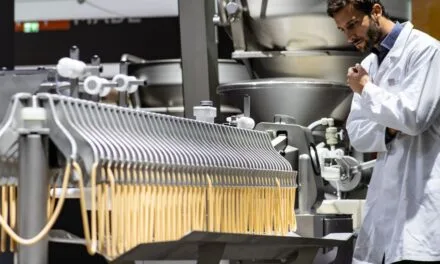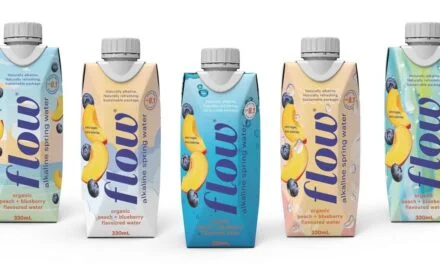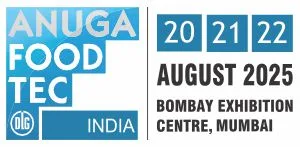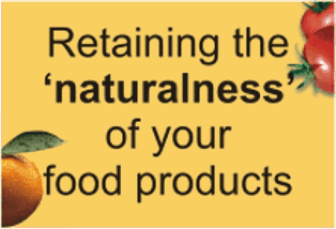It has taken the world less than four decades to turn plastic bags – prime single use plastic item – from ‘marvel to menace’, as aptly put by National Geographic. And now that the ban on single use plastic is at our doorstep. The direct impact of the ban on plastic will no doubt reduce plastic waste, but it could also lead to loss of capital and important resources for food processing industries, it is time to look at the total picture. A report.
Who’s not worried about the environment? Everyone is. So, when the ban on the single use plastic item is imposed sometime soon, we should be ready.
A recent item in the Mint points out that “following Prime Minister Narendra Modi’s efforts (he spoke about it during his August 15 speech this year) to restrict the use of single use plastic in the country to tackle the rising threat of pollution and health hazards, more and more companies are limiting the use of such items”. The news item mentions that the country is likely to impose a nationwide ban on plastic bags, cups, small bottles, straws, and some types of sachets in October.
Single use plastics are items that are used only once. Used primarily in the food and drink industry, single use plastic items are used because of their reliance on packaging and convenience. A blanket ban on their use has led to debates and discussions and meetings on alternatives. But before anything else, one must know the extent of the problem.
India’s per capita plastic consumption is at 11 kg per annum: quite low in comparison to the US or China. However, what is alarming is that forecasts point out that the country’s plastic consumption and plastic waste is set to go up in the future. The plastic processing industry in 2018 estimated that polymer consumption from 2017 to 2022 is likely to grow at 10.4 per cent; nearly half of which would be single use plastic.

The most affected by the changes in regulation regarding single use plastics due to their heavy use in packaging will be those units that deal with food, drink, retail and e-commerce. For the food processing industry, leaving plastic, or switching to alternatives, brings in risks like food spoilage.
The question that is on stakeholders’ as well as many others is whether a ban is the solution? The whole country was witness to the confusion that took place when plastic bags were banned in Mumbai some time ago. As Vaishnavi Chandrashekhar writes in Yale Environment 360, “In June (2018), one of the world’s strictest plastic bans came into effect in the western Indian state of Maharashtra, of which Mumbai – population 18.4 million – is the capital. Plastic bags had been banned here before, to little effect. This time, however, thanks to a strong push from a prominent young local politician, the restrictions are far more sweeping. They included bans on the manufacture, sale, and use of throwaway plastic items such as bags, plates, cutlery, straws, and small bottles, as well as new regulations governing retail packaging and Styrofoam. And penalties for manufacturing and selling these items were now higher than ever, including fines of up to $350 and jail terms of up to three months.”
She continues that in the “first week of the ban was marked by drama and confusion. More than 300 plastic bag manufacturers reportedly had to close, throwing thousands of people out of work. Restaurants began using aluminum takeout containers. Residents weren’t sure if they could even use plastic bags for their garbage”.

Soon came, what Chandrashekhar described as “the backlash. Within a week – after pleas from plastic manufacturers, milk suppliers, small traders, consumer giants like Pepsi and Coca-Cola, and e-commerce companies like Amazon – the government relaxed the rules, exempting small traders and granting more time for bigger players to come up with solutions for retail packaging, including alternative materials and recycling schemes. For now, only plastic bags, takeout containers, plates, and Styrofoam remain forbidden”.
In July this year, the United Nations counted 127 nations that have banned or taxed bags. This spring, the European Union took steps to ban plastic bags as part of a sweeping effort on plastic items found most commonly on Europe’s beaches. In the United States, New York became the second state, after California, to ban plastic bags and at least 95 bills relating to bags were introduced in state legislative sessions this winter, more than any other year.
A ban, no doubt, will be welcome and justified. But what will we replace these single use items with? Have the questions on economics, accessibility, and availability of alternatives been fully investigated?
To begin with, the centre and the states need to spell out the ban and how it will play out only after doing a study and evaluating possible actions by using a combination of regulatory, economic and voluntary tools involving various stakeholders. For multi-layered packaging, apart from extended producer responsibility (EPR) which should have schemes such as Deposit Refund Scheme (DRS), consumer responsibility should also be worked upon by targeted campaigns and social engineering tools to make people aware of the concerns and alternatives to plastics.
According to a 2015 assessment by the Central Pollution Control Board (CPCB), 6.92 per cent of the municipal solid waste (MSW) in the country comprises plastic waste. The study found out – from the waste generation data gathered from 60 major cities – that around 25,940 tonnes per day (TPD) of plastic waste is generated in India. Of this, around 15,600 tpd, that is 60 per cent is recycled, still leaving behind nearly 10,000 tonnes of it, which eventually ends up in the drains, rivers, seas, or simply as the litter that we see everywhere around us. The study also revealed that approximately 70 per cent of plastic packaging products are converted into plastic waste in a short span.
The direct impact of the ban on plastic will no doubt reduce plastic waste, but it could also lead to loss of capital and important resources for food processing industries. Banning of plastic would affect polymer manufacture, plastic processors, and recycle players. Additionally, the plastic industry is highly labour intensive and largely unorganized and the ban would directly affect employment. In Maharashtra, AIPMA (All India Plastic Industries Association) claimed that the ban will result in the shutdown of 2150 industries units. It will also affect the country’s GDP.
While it should be appreciated that time will be taken to develop new technology for new packaging material and recycling, a few suggestions for an alternative to plastic in the food processing industry could be looked at:
- Use of plastic bottles for water or drinks should be done away
- Multi-polymer packaging materials should be discouraged to ensure the easy recyclability of packaging material.
- Find and use alternatives to plastics: Bio-plastic and biodegradable plastics like polylactic acid (PLA), bio-based polymers derived from corn starch can be alternative to conventional plastics.
- R&D for new alternatives and recycling of packaging material should be encouraged.
Already moves are on to do away with drinking straws. It is the same with plastic carry bags that can be replaced with cloth/jute bags made from upcycled textiles/cloth. There could be move to use crockery – perhaps, a crockery bank set up by municipalities could be looked at. Green Protocols in Kerala (a state-wide initiative to discard the use of SUPs during public and private events using crockery banks) and crockery banks in Ambikapur, Chattisgarh, are some examples that have become successes.
For the industry, the time has come to adapt to changes. As campaigns against single use plastic gain momentum, consumers will also begin to change and become more environmentally conscious about their purchases. That is when food and drink industry will need to focus on their packaging and their marketing to ensure that they are still relevant to their audiences. Zero-waste shops should be encouraged to enter the market and compete with established brands.
As for the food and drink industry, there have been initiatives – although not in India – to replace coffee cups with the implementation of re-fillable cup discount schemes. Similar alternatives can be worked upon by the food and drink industries since the changes are bound to happen. Forward-thinking companies should begin looking at their use of plastics and understand where changes can be made so that they are not damaging the environment and be able to still serve their customers.
Also Read: Single use Plastic: Banning Easy, But Alternatives Difficult
















Trackbacks/Pingbacks